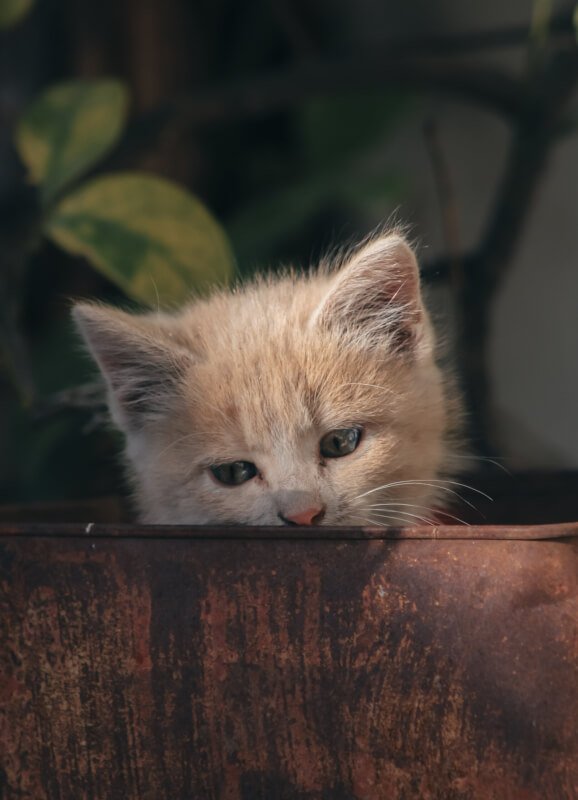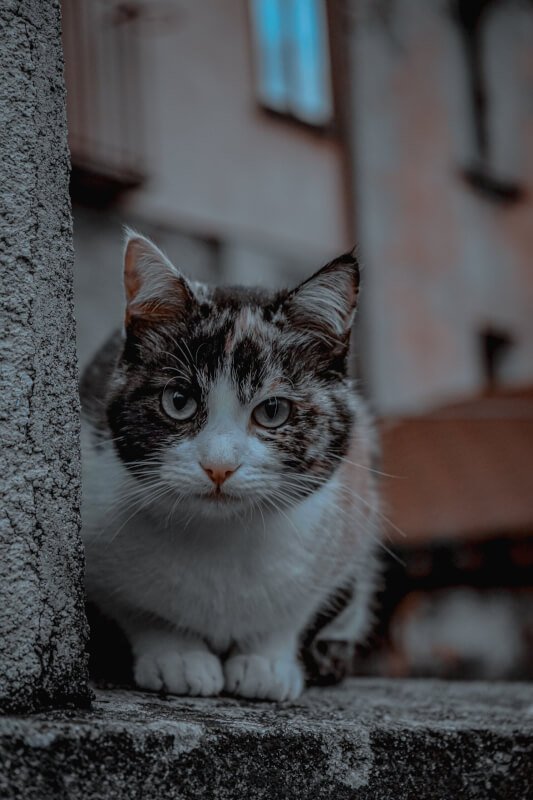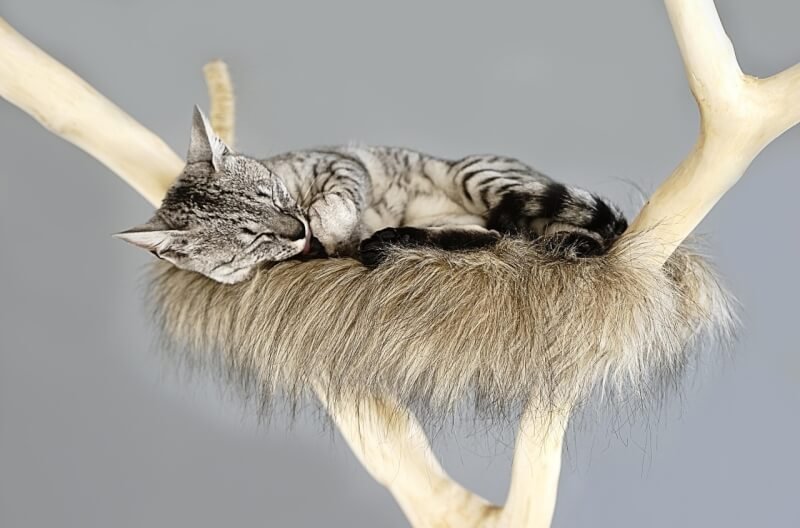If you’ve ever owned a cat, you know how they love to scratch just about anything they can find. From furniture to curtains, they seem determined to leave their mark on everything in your home – and not in a good way. That’s where a scratching post comes in. Not only does it provide a designated spot for your furry friend to satisfy their scratching instinct, but it also helps protect your belongings. In this article, we’ll explore why every cat owner needs a scratching post and provide you with some expert tips on how to choose the right one for your feline companion. So, say goodbye to shredded couches and hello to a more harmonious home for both you and your beloved cat.
Why Every Cat Owner Needs a Scratching Post
Cats are natural scratchers, and providing them with a scratching post is a must for any cat owner. Not only does a scratching post fulfill your cat’s instinctive need to scratch, but it also offers a multitude of benefits that contribute to their overall health and well-being.
The Importance of a Scratching Post for Cats
A scratching post plays a vital role in a cat’s life. It helps them maintain their nail health by removing the dead outer layers and keeping their claws in optimal condition. Scratching also allows your cat to stretch their muscles, helping to keep them strong and agile.
Benefits of Having a Scratching Post
- Preventing Destructive Behavior: Cats often scratch as a way to mark their territory. By providing them with a scratching post, you can redirect this behavior away from your furniture, curtains, or walls. A cat who has a designated scratching post is less likely to engage in destructive scratching.
- Promoting Exercise: Scratching is an excellent way for cats to burn off energy and exercise their muscles. By offering a scratching post, you give your cat an outlet for their natural inclination to scratch and climb, promoting physical activity and preventing a sedentary lifestyle.
- Maintaining Nail Health: Regular scratching helps cats shed the outer layers of their nails, preventing them from becoming overgrown or ingrown. A scratching post allows your cat to file down their claws naturally, reducing the need for frequent nail trims.
How to Choose the Right Scratching Post
Choosing the right scratching post for your cat is crucial to ensure they will use it and reap its benefits. Here are some factors to consider when making your selection:
Understanding Your Cat’s Preferences
Observe your cat’s scratching tendencies. Pay attention to their preferred scratching surfaces – whether it’s vertical or horizontal, carpeted, or textured. Knowing your cat’s preferences will help you choose a scratching post that they are more likely to use.
Considering the Size and Stability
Ensure that the scratching post is tall enough for your cat to stretch fully. Cats love to reach upwards when they scratch, so a post that allows them to extend their entire body length is ideal. Additionally, look for a post that is stable and won’t wobble or topple over when your cat uses it.
Choosing the Right Material
Scratching posts come in various materials, such as carpet, sisal rope, corrugated cardboard, or wood. Each material offers a different texture and feel for your cat. Experiment with different materials to determine which one your cat prefers.
Opting for Vertical or Horizontal Scratching Posts
Some cats prefer to scratch vertically, while others prefer horizontal surfaces. Consider your cat’s scratching habits when selecting a scratching post. If your cat enjoys scratching horizontally on the carpet, a horizontal scratching post or mat may be more appealing to them.
Deciding on a Stand-alone or Wall-mounted Post
Depending on your living space and the available room, you can choose between a stand-alone scratching post or a wall-mounted one. Stand-alone posts can be moved easily, while wall-mounted posts save floor space and provide a permanent scratching solution.
Factors to Consider in a Scratching Post
When evaluating different scratching posts, keep these factors in mind:
Height and Length of the Post
Ensure that the scratching post is tall enough for your cat to fully stretch their body length. A taller post allows your cat to engage in a more satisfying scratching experience.
Stability and Durability
Choose a scratching post that is sturdy and stable. Cats can be quite energetic when scratching, and a wobbly post can discourage them from using it. Look for materials that are durable and can withstand the wear and tear of regular scratching.
Material and Texture
The material and texture of the scratching post play a significant role in attracting your cat to use it. Opt for materials like sisal rope or textured cardboard, as they provide a satisfying scratching experience for your cat.
Color and Design Options
While your cat may not have a strong preference for color or design, it’s always nice to choose a scratching post that complements your home decor. Many scratching posts come in a variety of colors and designs to suit different aesthetic preferences.
Additional Features or Accessories
Some scratching posts come with added features, such as platforms, hiding spots, or dangling toys, which can enhance your cat’s scratching experience. Consider these additional features if you’re looking to provide extra entertainment and engagement for your cat.
Different Types of Scratching Posts
There are various types of scratching posts available, each with its own unique features and benefits. Understanding the different options can help you choose the right scratching post for your cat:
Traditional Carpeted Scratching Posts
Carpeted scratching posts are a popular choice for many cat owners. The soft and plush surface mimics the texture of furniture, making it an appealing alternative for cats who tend to scratch upholstery. These posts often come in different heights and sizes to accommodate cats of all sizes and ages.
Sisal Rope Scratching Posts
Sisal rope scratching posts provide a satisfying texture for cats to sink their claws into. The roughness of the sisal rope mimics the texture of tree bark, which is a natural scratching material for cats. These posts are durable and can last a long time, even with regular use.
Cardboard Scratching Posts
Cardboard scratching posts are a budget-friendly option that many cats find irresistible. The corrugated texture of the cardboard offers a unique scratching experience while allowing your cat to shed their nail layers. These posts are lightweight and easily replaceable when worn out.
Cat Trees and Multi-level Scratching Posts
Cat trees are more than just scratching posts – they are a complete play and lounge area for your cat. These multi-level structures often feature scratching posts, platforms, perches, and even hiding spots for your cat to explore. Cat trees are ideal for households with multiple cats or if you want to create an expansive play area for your furry friend.
Hanging or Wall-mounted Scratching Posts
Hanging or wall-mounted scratching posts are excellent choices for small spaces or if you prefer to keep the floor clutter-free. These posts can be hung from door frames or attached to walls, providing vertical scratching opportunities for your cat without taking up valuable floor space.

Train Your Cat to Use the Scratching Post
Introducing a new scratching post to your cat may require a bit of training and encouragement. Here are some tips to help your cat transition to using the scratching post:
Placing the Scratching Post in the Right Location
Position the scratching post in an area where your cat spends the most time or where they tend to scratch the furniture. By placing the post in a visible and accessible location, you increase the likelihood of your cat using it instead of your beloved couch.
Encouraging Your Cat to Use the Post
Gently guide your cat to the scratching post and encourage them to interact with it. You can use toys or treats to create a positive association with the post. Praise and reward your cat when they show interest in or use the scratching post.
Redirecting Unwanted Scratching Behavior
If your cat starts scratching furniture or other inappropriate surfaces, gently redirect them to the scratching post. Use a soft, firm voice to discourage the behavior, but avoid yelling or punishment. Consistently guide your cat to the scratching post until they understand that it is the appropriate place to scratch.
Using Positive Reinforcement and Rewards
Positive reinforcement is crucial when training your cat to use a scratching post. Reward your cat with treats, praise, or affection every time they use the post correctly. This positive association will encourage your cat to engage with the post more frequently.
Being Patient and Consistent
Remember, training your cat takes time and patience. It may take several weeks for your cat to fully transition from scratching furniture to using the scratching post consistently. Be consistent in redirecting unwanted behavior and reward your cat every time they use the post correctly.
Alternatives to Scratching Posts
While a scratching post is an essential item for any cat owner, there are alternative options to consider:
Cat Scratching Pads and Mats
Scratching pads and mats are smaller alternatives to scratching posts that can be placed in various areas of your home. They provide a designated scratching surface for your cat and help protect furniture and carpets from unwanted scratching.
Cat Trees and Climbing Furniture
Cat trees and climbing furniture offer a multi-purpose solution for cats. Not only do they provide scratching surfaces, but they also offer platforms, perches, and hiding spots for your cat to explore and play on. These structures give your cat a sense of vertical territory and can help fulfill their natural instincts.
Deterrent Sprays and Furniture Covers
If your cat persistently scratches furniture despite having a scratching post, you can use deterrent sprays or furniture covers to protect your belongings. Deterrent sprays emit a scent that cats find unpleasant, deterring them from scratching the sprayed area. Furniture covers act as a physical barrier, preventing your cat from reaching the surface of the furniture.
Trimming Your Cat’s Nails
Regular nail trims can also help prevent destructive scratching. By keeping your cat’s nails trimmed, you reduce the likelihood of them causing damage to furniture or other surfaces. Consult your veterinarian or a professional groomer for guidance on safe and effective nail trimming techniques.
Nail Caps or Nail Covers
Nail caps or covers can be an option for cats who frequently scratch furniture despite other preventive measures. These caps are placed over your cat’s nails and prevent them from causing damage when scratching. However, they should be used under the guidance of a veterinarian or a professional groomer.

Frequently Asked Questions
Why Is My Cat Not Using the Scratching Post?
There could be several reasons why your cat is not using the scratching post. It could be a matter of preference in terms of material, texture, or location. Try experimenting with different types of scratching posts and consider repositioning the post to a more enticing location.
Can I Make a DIY Scratching Post at Home?
Absolutely! DIY scratching posts can be a fun and cost-effective alternative. You can create a scratching post using materials like sisal rope, cardboard, or carpet remnants. There are plenty of online tutorials and resources available to guide you through the process.
How Can I Repair or Replace Parts of a Scratching Post?
Over time, scratching posts may experience wear and tear. If a specific area of the post becomes damaged or worn out, you can attempt to repair it by rewrapping with fresh sisal rope or attaching a new piece of carpet. However, if the scratching post is beyond repair, it’s best to replace it to ensure your cat’s safety and satisfaction.
Is It Necessary to Have Multiple Scratching Posts?
Having multiple scratching posts can be beneficial, especially in multi-cat households or larger living spaces. This ensures that each cat has access to a scratching post and reduces the likelihood of territorial disputes over a single post. Additionally, having multiple posts allows your cat to scratch in different areas of the home, further preventing destructive behavior.
How Often Should I Replace a Scratching Post?
The lifespan of a scratching post can vary depending on the material, quality, and frequency of use. Generally, it is recommended to replace a scratching post every 1-2 years, or when it shows significant signs of wear and tear. Regularly inspect the post for stability and durability, and replace it if it becomes unstable or unsafe for your cat to use.
Conclusion
A scratching post is an essential item for every cat owner. It offers numerous benefits, including preventing destructive behavior, promoting exercise, and maintaining nail health. Choosing the right scratching post involves considering your cat’s preferences, the size and stability of the post, the material and texture, and additional features or accessories. Training your cat to use the scratching post requires patience, positive reinforcement, and consistency. However, if your cat still prefers other surfaces, there are alternative options like scratching pads, cat trees, deterrent sprays, nail trimming, or nail caps. By providing your cat with a suitable scratching solution and proper care, you ensure their overall well-being and happiness.



